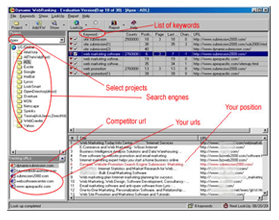
The rank of a website on a search engine is known as its website position. You can begin to improve your site positioning by starting with an extensive and exhaustive list of possible search concepts relevant to your site. For this, you might want to come out with every permutation and combination of possible keywords that make sense in the context of your website. You can do this by figuring out the possible search terms that potential customers might enter into various search directories to locate the kind of products and services marketed by your website. You can find highly popular, reasonably popular, as well as unpopular keywords related to your site, by entering related words in any of the free keyword tools available online, so that it may generate the desired output of keywords already used by searching users worldwide.
The next step is to shortlist a search directory, where you wish that your website gets listed. You could research and shortlist a few primary search directories. These primary directories must be globally recognized and well-accepted, which can be followed by the creation of a secondary list of search directories, pertaining to your business type or regional location or local community. You can then have your shortlisted set of keywords tested. This work can be executed by individually querying your list of primary search directories with your list of individual keywords. An inspection of the search results will help you see if the results indeed pertain to the kind of business, product or service that you market through your web site. As such, this would verify the applicability of your shortlisted keywords in your given business context. Note the exact location of the keyword in the resulting web link, in terms of its presence in areas such as the title, section headings, paragraphs, or icon labels etc. Now design a title for each of the web pages on your website, using your final list of keywords.
The topmost keyword will have a place in your homepage title for instance. A title must neither exceed 10 words, nor should it be less than 6 words in length. Most importantly, it must give a one-line gist of the entire page, whose title it is. On similar lines, form titles of the remaining web pages using the remaining keywords. Every title must be different from another. Follow this with a brief unique content for each web page.
This brief content is only accessible via HTML code, and is used by search directories for content classification purposes. Include invisible keywords in their order of significance. Now you are ready to fill each web page with as much content as you wish; include one or two keywords per paragraph of content per web page and you can even embolden the keywords, if you so desire. Finally, submit your links to the search engines. Now you can sit back and watch your web page rise in their web site position within a matter of just four to six weeks, or sometimes just a week or two longer than that.

